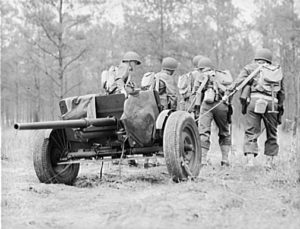In our interview with Dr. Sterling, we discuss how militaries learn (or don’t!) from foreign conflicts, what pitfalls await those trying to learn from historical conflicts, how focusing only on “relevant” observations hampers our creativity in analyzing warfare, and what strategists can do to avoid past mistakes. The following bullet points highlight key insights from our interview:
In Other People’s Wars, Dr. Sterling provides a longitudinal evaluation spanning the 19th and 20th centuries on what the U.S. military learned from foreign conflicts. Exploring the Crimean, Russo-Japanese, Spanish Civil, and Yom Kippur Wars as use cases, Dr. Sterling identifies how effectively the U.S. assimilated key lessons from each of these conflicts and developed responsive capabilities across doctrine, organization, training and education, materiel, leadership, personnel, facilities, and policy (DOTMLPF-P); drew erroneous conclusions; or failed to act altogether. Importantly, Dr. Sterling compares the success of learning from these wars across the U.S. Army, Navy, and Air Force.
Studying foreign conflicts allows the U.S. military to learn about new technologies, their applications, and novel problem sets, facilitating proactive responses to problems before they are encountered in the field. For example, at the beginning of the 20th century, the U.S. Army was reconsidering the future of the bayonet. Observations from the Russo-Japanese War, where knife fighting was prevalent — especially in night assaults, given the heightened risk of friendly fire — led Army Leaders to determine that the weapon was still relevant, and should be maintained.
Learning from foreign wars can be a challenging endeavor, as it frequently runs counter to deeply-rooted institutional biases. Services’ culture and bureaucratic politics can limit the implementation of lessons learned from other nations’ conflicts. Insufficient access to information can also prevent the Services from fully appreciating the important implications of remote conflicts involving less than peer adversaries.

The Enemy Gets a Vote –– U.S. Army 37mm M3 AT Gun at Ft. Benning, GA. Continued improvement of German armor, spurred in part by the Condor Legion’s lessons learned during the Spanish Civil War, quickly rendered our primary AT gun ineffective in the Mediterranean and European Theaters of Operation during WWII.
The U.S. military also needs to be mindful that other observers learn from foreign conflicts, too. For example, while the U.S. Army learned of the importance and adopted Anti-Tank (AT) guns from observing combatants during the Spanish Civil War, these weapons were quickly rendered obsolete by what other powers observed in this conflict, largely rendering AT guns ineffective by the advent of WWII. Thus, considering the viewpoint from other observers is critical in preparing for the next war.
Cooperation with foreign combatants is more important than direct observation when trying to learn from foreign wars. Access to information and contextual perspective can allow for understanding of the conflict without requiring direct U.S. presence.
Increased levels of disinformation will make learning and effective decision-making more challenging, especially under the time pressure induced by conflict.
No comments:
Post a Comment